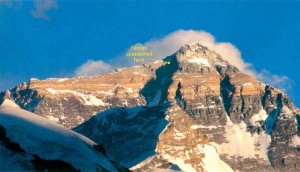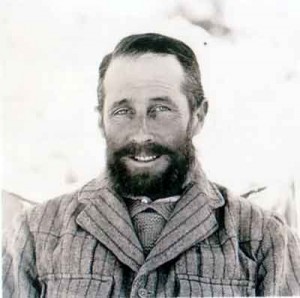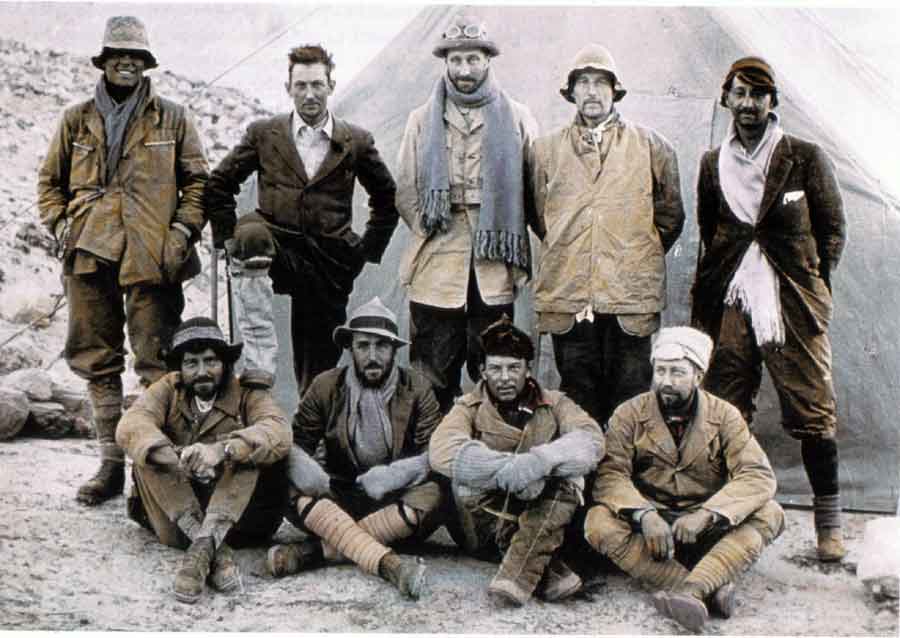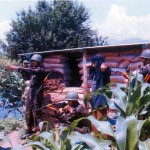“A great Gentleman, a gallant Horseman, a true friend.” 1912.
“And the men who have pioneered the way (Sic. to the summit of Everest) deserve in full measure the gratitude of their kind for the sacrifices they made.” 1924.
The first statement was the measure of Captain Edward Felix Norton, of “R” Battery, Royal Horse Artillery, as recorded by his Battery Commander, Major (later Lieutenant General) A E Wardrop in 1912, at Mathura. And the second quote was a tribute to Norton in 1924, from a man often called “the last great Imperial adventurer,” Col Sir Francis Younghusband, CIE, KCSI. The occasion was the felicitation function especially organized by The Royal Geographic Society, London, to honour the members of the Second Everest Expedition and in particular the man who came with-in a whisker of summiting the “Third Pole”, in a solo bid.
The period in-between 1912-24, was essentially dominated by W W I from which E F Norton (henceforth EFN) had emerged a distinguished and a combat- seasoned officer. Unfortunately, men of that caliber seldom write autobiographies and E F N was no exception to the rule. Luckily, there survives reasonable amount of secondary source-material to help us recreate somewhat, the man and soldier that E F N was in body and soul, as it were.
…what gained him prominence the most, were his skills at mounted sports: Polo, the Point- to Point Chase and Pigsticking; the latter often termed as the King of Sports and the Sport of Kings!
For a start, we know for sure that he was born on 21st February, 1884 in a luxurious, colonial mansion at San Isidro, about 22 Km North of Buenos Aires. The family were in Argentina because the elder Norton was a Director of the Royal Mail and Union Castle shipping lines and besides, they had also set-up a prosperous business venture, the “Estancia la Ventura.” Most children born in the lap of luxury and in particular in Argentina of those days, were put astride a horse and they grew up bonding with equines, as first love. Little wonder that the Argentinean Polo Teams were the World’s lowest handicapped ever, minus nine at one time! And E F N, for the better part of his life, would keep horses with-in his sights. His indulgent parents would next enroll him at Charterhouse, a top of the rung Public School in England where equestrian sports and most other out-doors pursuits were encouraged. It was natural therefore that E F N would set his sights on the Army as a profession and would competed for and enter the Royal Military Academy, Woolwich rather than Sandhurst as the former trained potential officers exclusively for the Royal Horse Artillery and the Corps of Engineers.
Well, if one half of E F N’s family were equine- focused, the dominant urges of the other half were positively inclined to mountain climbing. The maternal grandfather, Sir Alfred Wills, judge of the Queen’s Bench Division, spent summers in his chalet the Eagle’s Nest, in the Swiss Alps where each door and widow of the house opened on inviting snow clad mountains and meandering glaciers. As Wills was also the Founder of The Alpine Club and its third President, he would constantly expose and encourage E F N to become one with the mountains. And unwittingly, the old man Wills would so hone the climbing skills of the tall and lean youth that by the 1920s, the Alpine Club circles through-out Europe would admit that: “Norton is really one of the best, and we have a splendid leader in him…. is really full of interest, easy yet dignified, or rather never losing dignity, and is a tremendous adventurer.” These words coming from the legendry climber George Mallory (just days before he vanished forever, off the face of Everest on 07 June 1924), were high praise, indeed.
Be that as it may, when on graduation from Woolwich, E F N opted for the Royal Horse Artillery (RHA) and to serve in India, climbing for a while would take the back-seat. And the formative years from 1903 to 1913, were partly spent on the N W Frontier where Artillery fire support was always desperately needed and in the process, E F N gained much professional merit. But that was also the era when young officers were encouraged to pursue out-doors sports. So E F N would spend at least one month of his annual leave each year, scouting for the elusive Markhor, the Ibex and the Himalayan Thar in the Hunza, Chitral and Kashmir valleys. And his collection of rare “trophy-heads”, would be considered matchless and the envy of his peers. But what gained him prominence the most, were his skills at mounted sports: Polo, the Point- to Point Chase and Pigsticking; the latter often termed as the King of Sports and the Sport of Kings! He was the most obvious choice therefore, when the appointment of an aide-de-camp to the Viceroy, fell vacant. Paradoxically, he was denied the chance to compete for the coveted Hog Hunters trophy, that is, the “Kadir Cup” per se, because for six consecutive years E F N was nominated the Organizing Secretary of this annual, Blue-ribband Meet of the horse-world. That encumbrance not-withstanding, he would savor the full flavor of the Kadir Hunt, as he drilled the field staff during the week long preparatory stage. The Kadir Cup, constituted as an individual event in 1869 was contested up to 1930 with two brief interruptions: the first in 1879-80 occasioned by the Afghan War and again in1915-18 on account of W W I. The maximum winners were the gentlemen officers from the Hussars, closely followed by the R H A. No one knows by whom, nor the reason why but sadly in 1947, the Kadir Cup was placed in the Cavalry and Guards Club, London and was once also seen at the Officers Mess, R M C, Sandhurst?
…on 19 May 1922, George Mallory and E F N reached 26,985 ft ASL (the highest that man had ascended so far) when bad weather forced a retreat from the mountain.
Now in 1913, the “R” Battery R H A Team led by E F N won the Muttra Cup, which was a befitting farewell not just to this gallant horseman but to this sport as well because post WW I, the sport withered away. No matter how long and often he was astride a horse or out on the field with a sporting gun and rifle but down and under, E F N remained a focused and hard-core professional soldier. For, he would qualify and enter the Defense Services Staff College, Camberley in the term of 1913-14. And from there, go on to serve the entire period of WW I from 1914 to 1919 in Belgium and France. To begin-with, he would hold the coveted appointment of the Brigade Major and then as D A A G at a Divisional Headquarters till 1917, also in France. His hour of martial glory was to follow when he assumed command of D Battery R H A, satisfying his hunger for direct involvement in combat action on the battle-field, over the next two years. And the London Gazette of 26 July 1918 cites the conferment of the D S O to E F N and also goes on to reveal that he had been Mentioned in Dispatches thrice and awarded the M C, as well!! What a grand performance judged by any yard- stick. So it was a natural choice to post E F N to Camberley as an instructor from 1919 to 1921.
Sometime in Feb-Mar 1922, E F N set sail for India once again but this time as a climbing member of the First British Everest Expedition, under the leadership of the veteran Gurkhas officer, the Hon’ble Brig-General C G Bruce. And on 19 May 1922, George Mallory and E F N reached 26,985 ft ASL (the highest that man had ascended so far) when bad weather forced a retreat from the mountain. Only too conscious that they had been piped in the race both to the N and S Poles, the British were determined to be the first on the Third Pole, viz Everest. So, fortified with renewed vigor, they returned to Everest in 1924 and Lieut Colonel E F Norton would assume leadership from the ailing Brig-Gen Bruce.
 The second and most determined attempt by this expedition was launched from Camp VII, by E F N and Dr Somervell, on 04 June 1924. Unfortunately, Somervell’s chocking cough so incapacitated him, that placing him under the shelter of a rock-spur, E F N proceeded on an incredible solo climb thence forward to the summit of Everest, which is best described in his own words, thus:
The second and most determined attempt by this expedition was launched from Camp VII, by E F N and Dr Somervell, on 04 June 1924. Unfortunately, Somervell’s chocking cough so incapacitated him, that placing him under the shelter of a rock-spur, E F N proceeded on an incredible solo climb thence forward to the summit of Everest, which is best described in his own words, thus:
“Beyond the Coulior the going got steadily worse…. It was not exactly difficult going but it was a dangerous place for a single, un-roped climber… the strain was beginning to tell and I was getting exhausted… In addition, I began to experience some trouble with my eyes. I was seeing double and in doubt where to put my foot… It was by now 01 PM and a brief calculation showed that I had no chance to climb the remaining 800 to 900 ft if I were to return in safety….. In an hour I had gained under 100 ft in height and in distance perhaps 300 yards… at a point subsequently fixed by theodolite as 28, 126 ft, I retraced my feet to rejoin Somervell…. We decided we must go down the mountain and own ourselves beaten in a fair fight…”
I have yet to come across a more noble, modest, or honest acknowledgement of defeat by any Gentleman Officer, than the one reproduced above (!!) from E F N’s book, “The Fight For Everest: 1924.” Today, the book rates as a classic of mountaineering literature, in the world. E F N was elected to the Alpine Club but why he shied away from the offer of President-ship of the Club on two occasions in later years, is a mystery. E F N founded the Mountain Club of India and was the Founder member of the Himalayan Club, as well. Although Everest would yield its summit to scores of people, post May 1953, but E F N’s record of getting to 28,126 ft ASL, with-out the use of oxygen, was bettered only in 1978, by the Austrian Reinhold Messner who, climbing without oxygen and solo from the North Col, up the “Norton’s Coulior” on-to the summit, descended to the South Col, in one go!! That too was an exceptional feat but E F N’s pioneering effort will always be rated among the most phenomenal of sporting endeavors.
Out side the Army Service, probably the two of E F N’s proudest recognitions were the Winter Olympics Gold Medal, and the Founder’s Gold Medal of the Royal Geographical Society, both of which had the Everest link.
In between the two Everest expeditions, E F N did another brief stint as Brigade Major some where in Turkey but that may well have been only a paper posting for rest and recuperating. However from 1926 to 1928 he had a longer tenure at the War Office, London as a GSO 2. It was possibly in 1929 that E F N attended the Imperial Defence College before reverting to India once again and this time, as the senior instructor at the Staff College, Quetta up-to 1932. But once promoted, he shuttled back to UK first as Commander Royal Artillery, 1 Division and next as BGS of the Aldershot Command, 1934-38. Concurrently, he would serve as ADC to His Majesty the King George VI. But the promotion to Major General would yet again (!) bring him back to India though in Command of Madras District, rather an un-military designation for our times. However, with the onset of WW II, E F N was first appointed the acting Governor of Hong Kong and then, C-in-C Hong Kong. At the peak of his professional career, E F N now had a near fatal ridding accident, from which he never really recovered. He was evacuated to India and was retired gracefully on health grounds in 1942, with the acting rank of a Lieutenant General. Back in England, E F N would now oversee the affairs of his beloved R H A, as their Colonel Commandant from 1947 to 1951. Once the British revived their effort to summit Everest, Colonel John Hunt the leader of the Expedition would spend days with E F N, fine-tuning the climbing plan and later thank the veteran Everester for his “strategic advice”, leading to success at last.
We do not know when he was conferred the C B title but in all probability it was for his services at Hong Kong. Out side the Army Service, probably the two of E F N’s proudest recognitions were the Winter Olympics Gold Medal, and the Founder’s Gold Medal of the Royal Geographical Society, both of which had the Everest link. At the personal level, perhaps the fondest of Everest fall-outs was E F N’s happy marriage on 18 December 1925 with Joyce, the daughter of William Pasteur, C B, C M G, a physician of note throughout Europe and a house-hold name among Alpine climbers! Sadly, even though E F N was alive when Everest was summited in May, 1953, but paradoxically we find him absent from the month long, “Coronation Everest” celebratory events in UK. Another bewildering omission was of Lieutenant Colonel F M Bailey but for whose personal equation and intervention with His Holiness the 13th Dalai Lama, the permission for the British to attempt Everest in the first place, would not have been accorded. Such are the sordid games played out by men and mice.
The provocation for this mind-journey was partly provided by the random picking from a shelf of books (inherited from my father), “Modern Pig-sticking” by Lieutenant General Sir A E Wardrop (E F N’s Battery Commander in 1912)! In the Preface to the 1930 edition of the Book, the General expresses his gratitude to E F N for “much kindly and valuable criticism and for his paintings which are as accurate as they are charming.” Now one thing led to another till I chanced upon a remark by E F C’s wife Joyce and son Bill at a dinner in 1991, that E F N had in fact filled two sketch books with water-colours, of the Everest 1922 and 1924 Expeditions! Some of those paintings such as of Chomolhari, Gaurishanker, Cho Uyo and of course several of Everest, to mention a few, will for ever transport the viewer, whether any mortal or a Gunner, to E F N’s plausible reveries:
“ He that has been in such a scene,
That scene shall ne’er forget.
In silent mood, in solitude
Its dreams shall haunt him yet.”
Of course, the story of this iconic Gentleman Officer does not quite, conclude here. If among the serving generation, some one were to trace out the citation texts of E F N’s gallantry decorations and civil awards, we will have a fuller vision of this soldier and the man per se. And if we could un-earth the list of birds E F N had documented, particularly from the Everest region and later, the music he preferred seated in front of a fire-place, with a smoking-pipe in hand and eyes shut, may be we could then bring the curtain down finally, in the spirit of the soulful notes of the Auld Lang Syne!
“Should auld acquaintance be forgot
And never bro’t to mind?
We’ll take a cup of kindness yet,
And here’s a hand, my trusty friend,
For Auld Lang Syne, my dear.”
Lest the readers may have forgotten, the Auld Lang Syne holds a special appeal to all Gentlemen Officers because it was composed in Corsica where it was played out and sang for the first time by a congregation of the islanders when the body of one of their natives, Napoleon Bonaparte was finally interned at Les Invalides, Paris.
Note:
- Lt Gen E F Norton, C B, D S O, M C ., 1884-1954, an iconic Gentleman Officer







I greatly enjoyed this – full of information to be gleaned nowhere else. In London I lived in the flat above EFN’s late son, Hugh, who was Head of Risk and Exploration at British Petroleum. I think extreme modesty ran in the family. I knew his father had been a three-star general but never realised he’d led such an adventurous life or been a friend of Mallory. Thank you again.
Really excellent, thank you.